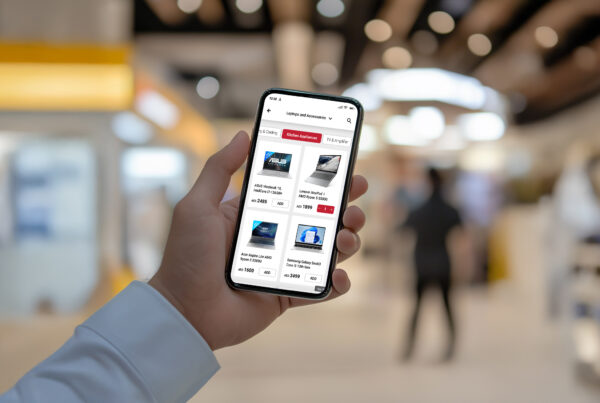The world of business has never been more unpredictable. From unforeseen supply chain shocks to rapidly changing consumer behaviors, companies are constantly navigating a maze of new challenges. The traditional models of operational planning, once reliable, are now proving to be brittle in the face of this volatility. For businesses to not just survive but thrive, they must abandon the static playbook and embrace a dynamic approach. This new paradigm is not about simply reacting to change, but about building an operational backbone so strong that it can absorb disruptions and adapt on the fly.
At Lyve, we call this the art of translating strategic vision into a resilient operational flow. It’s the process of fortifying your business from the ground up, ensuring every component is not just efficient, but also future-proof.
The Imperative of Real-Time Insights
In a world that moves at the speed of light, guesswork is a luxury few can afford. The first pillar of a resilient operation is the ability to leverage real-time insights to make rapid, data-driven decisions. This is the difference between driving with a foggy windshield and having a crystal-clear view of the road ahead. Integrating advanced analytics and IoT (Internet of Things) technology, can help your business achieve unprecedented visibility across the entire value chain. This allows you to anticipate demand shifts and market changes. AI-powered solutions can use real-time data to improve inventory management and optimize storage and inbound shipments, providing a holistic view of operations.
Imagine a logistics network where every asset, from a warehouse robot to a delivery vehicle, is a data point. AI-powered platforms can analyze this constant stream of information to identify trends, predict demand shifts, and foresee potential bottlenecks before they escalate. This level of predictive intelligence allows for proactive measures, such as automatically rerouting a fleet to avoid traffic or optimizing inventory levels to prevent a stockout. It’s a shift from a reactive stance to a predictive one, giving you the power to anticipate challenges and maintain a competitive edge.
Building Flexible and Scalable Fulfillment
Customer expectations are no longer linear; they are a multi-faceted demand for speed, convenience, and choice. To meet this need, your fulfillment strategy must be inherently flexible and scalable. The days of a single, centralized warehouse model are over. A truly resilient operational flow embraces a decentralized approach, leveraging a distributed network of fulfillment points. Your logistics should be able to scale as customer needs change in an instant. Flexible, continuous planning allows companies to respond dynamically to changes in demand or supply, minimizing planning cycles.
This can involve innovative strategies like Ship-from-Store, which uses your physical retail locations as micro-distribution centers for local deliveries, significantly reducing transit times. Another powerful tool is Buy Online, Pick Up In-Store (BOPIS), which seamlessly bridges the gap between your digital and physical presence, offering a convenient option that also drives foot traffic to your stores. This emphasis on efficiency extends to core inventory management principles. For quick-service restaurants, understanding the First-In, First-Out (FIFO) model is the key to improving delivery management and ensuring product freshness. By building this kind of agility into your system, you can handle unexpected surges in demand, mitigate the impact of regional disruptions, and ensure your logistics can scale up or down without missing a beat. This adaptability is key to maintaining a smooth and efficient customer experience, regardless of market conditions.
Prioritizing a Customer-Centric Delivery Model
The final mile of delivery is no longer just a logistical step. To build lasting loyalty, a business must adopt a truly customer-centric delivery model that focuses on transparency, communication, and an exceptional user experience. This means moving beyond a simple “out for delivery” notification and providing customers with complete visibility on deliveries into their order’s journey. Focusing on the customer can help businesses create personalized services and products, thereby improving the customer experience and boosting loyalty.
By offering features like real-time tracking, accurate ETAs, and proactive updates, you transform a transactional process into a relationship-building opportunity. This transparency fosters trust and makes customers feel empowered. Furthermore, a customer-centric model is backed by smart technology. For instance, a geofencing feature can be used to ensure that drivers are at the correct location when performing critical actions, like order pickup or drop-off, which is how geofencing helps businesses meet last-mile compliance requirements.
Connecting and Expanding with Omnichannel Growth
Today’s consumers don’t think in terms of channels; they think in terms of their brand experience. They expect to be able to browse a product online, check its availability in a nearby store, and pick it up a few hours later. Omnichannel growth is the strategic approach that makes this seamless experience possible. It involves harmonizing all of your physical and digital touchpoints—from your e-commerce site and mobile app to your brick-and-mortar stores—into a single, cohesive ecosystem. This approach is a powerful way to meet customers where they are, providing them with consistent service across all physical and digital touchpoints.
A successful omnichannel strategy is built on a unified data model that provides a holistic view of each customer. This allows you to personalize promotions, provide tailored recommendations, and ensure a consistent brand voice across all interactions. By eliminating the friction between channels, you not only meet customer expectations but also expand your market reach and increase customer lifetime value. It’s about creating a unified journey that is intuitive and effortless for the consumer.
Creating Unbreakable, Resilient Supply Chains
The ultimate test of a business’s operational strength is its supply chain. A resilient supply chain is one that doesn’t just endure shocks but is built with the agility to pivot and adapt in a crisis. This involves a fundamental shift from a “just-in-time” philosophy which prioritizes lean, cost-saving measures to a “just-in-case” model that incorporates strategic buffers and redundancy. The four pillars of a resilient supply chain are diversification, localization, visibility, and flexibility.
Building resilience requires a multi-pronged approach:
- Diversify Suppliers: Reduce dependence on a single source by building a network of suppliers across different geographic regions. This minimizes your vulnerability to localized disruptions.
- Leverage Technology: The future of resilient supply chains is powered by technology. AI and machine learning are dramatically changing this space by enabling precise demand forecasting and real-time risk mitigation. It’s a transformation that’s impacting retail delivery operations and enhancing supply chain resilience.
- Embrace Nearshoring: Sourcing materials and manufacturing from nearby, localized locations can shorten lead times, reduce transportation costs, and provide a more agile response to unexpected events.
In an era defined by constant change, the ability to build and maintain a resilient operational flow is no longer a strategic advantage, it is a business imperative. The five pillars we’ve explored: real-time insights, flexible fulfillment, customer-centric delivery, omnichannel growth, and resilient supply chains are interconnected components of a single, future-proof ecosystem. They represent a fundamental shift from static, reactive planning to a dynamic, proactive model.
Embracing this holistic approach can transform potential disruptions into opportunities for growth for businesses of all scales and sizes. Predictive analytics will empower you to see around corners, while agile logistics will allow you to pivot with speed and precision. A relentless focus on the customer will build lasting loyalty, and a unified omnichannel presence will ensure your brand is always accessible.
Ultimately, this journey is about moving beyond simply surviving the next shock to being in a constant state of readiness, positioned to stay ahead of the curve and innovate in a world where change is the only constant.



